WATER FARM
THE PARADOX
Water scarcity is a ubiquitous problem with its magnitude expected to rise in the near future due to diminishing groundwater resources, mitigated river ?ows, dwindling lakes, and heavily polluted water. Only about 3% of the earth’s water resources is fresh and 2.5% are glaciers, leaving 0.5% for consumption by living organisms. The challenge of providing sufficient and safe freshwater is limited by population growth, climatic changes, industrialization, and contamination of available freshwater sources.
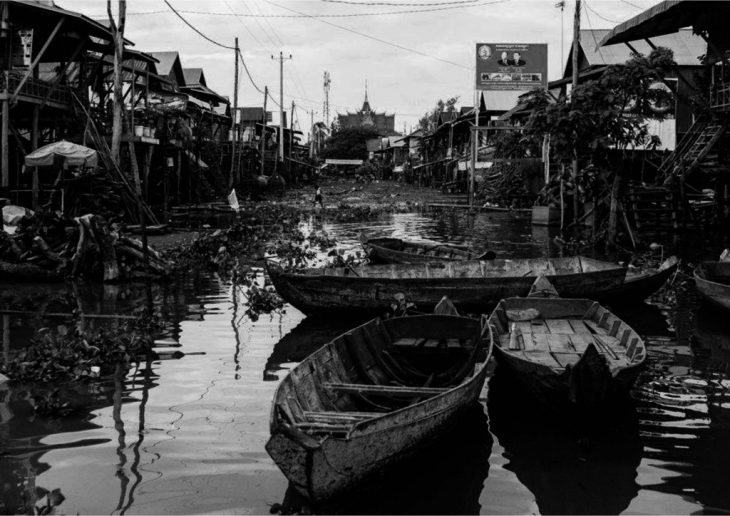
EVAPORATION
One of the most ignored water source is the humid air existing over open water surfaces at 85% and 90% Relative Humidity up to 2km above the water surface on average throughout the year. The process of evaporation removes most parasites, heavy metals and a lot of the higher risk impurities. Chemicals and pesticides that can follow the vapor stream can be removed by a simple filter.
HARVESTING THE MOISTURE RICH AIR WITH THE HELP OF HYDROGEL
Hydrogel can absorb moisture present in humid air to water without the need for any external energy input. By harnessing the moisture-rich air that is commonly found above water surfaces, we can collect clean water, which would otherwise be lost to the environment, for different uses.
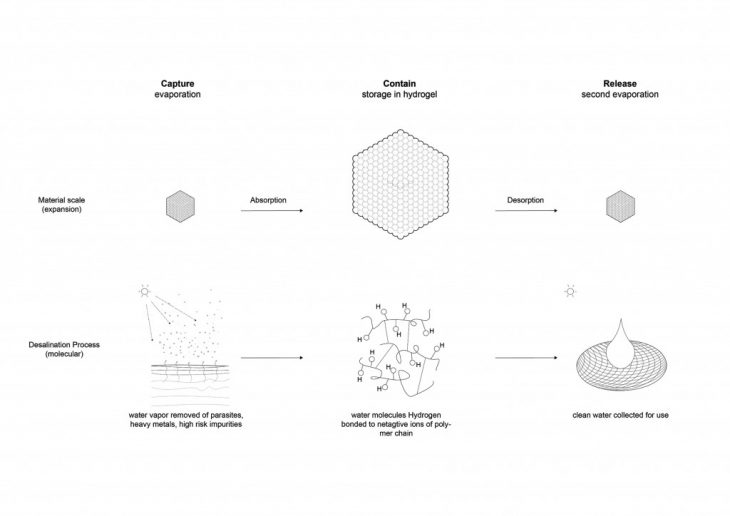
PROPERTIES AND CHARACTER OF HYDROGEL
A hydrogel is a network of polymer chains that are hydrophilic, sometimes found as a colloidal gel in which water is the dispersion medium. Hydrogels are highly absorbent (they can contain over 90% water) natural or synthetic polymeric networks.
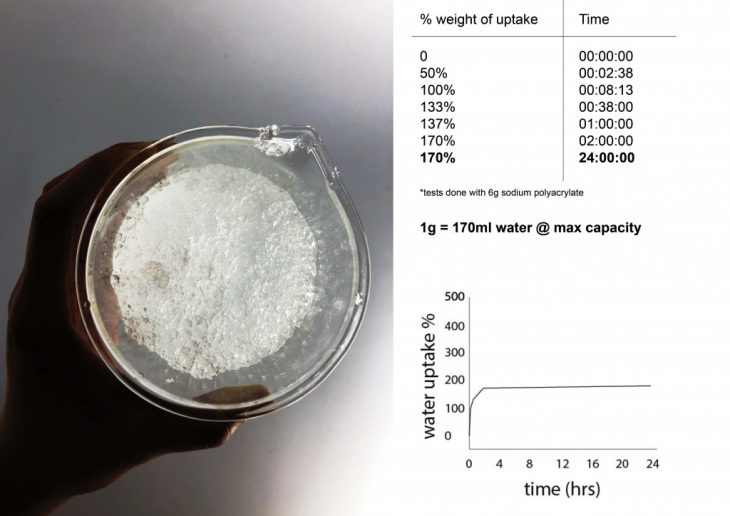
SYSTEM IMPACT
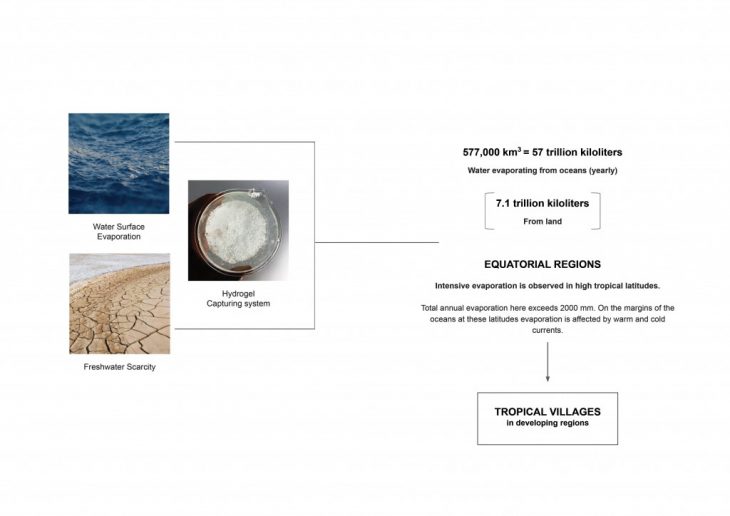
MATERIAL EXPERIMENTS
To understand the behavior of hydrogel, we did a simple experiment of the type of liquid sodium polyacrylate was caple of absorbing. Comparing regular tap water with seawater, we found that due to the salinity, there was oly 25% updake of hydrogelby direct absorption. We concluded that direct absorption of seawater was not effective.
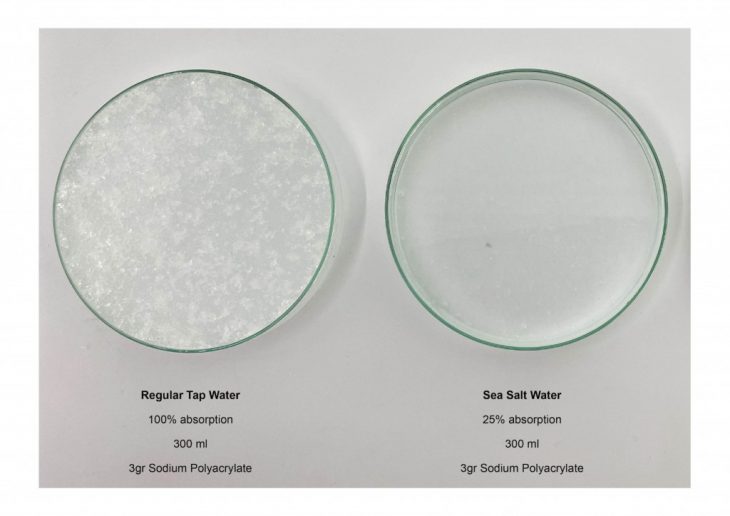
METHODS OF ABSORBING SEA WATER
A study was conducted to determine the best process for absorption through evaporation.
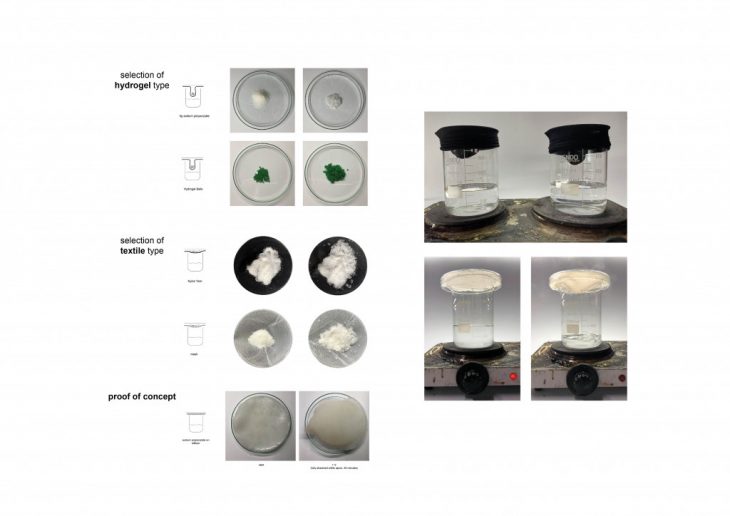
Although the test is generally used for fish environments, an analysis of each part was conducted in order to understand
when water is safe to drink as well as when elements were stripped from or added to the water.
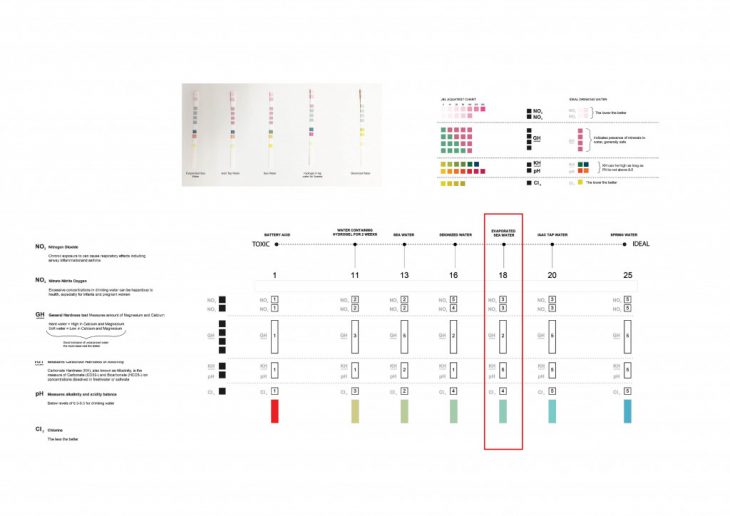
PROOF OF CONCEPT
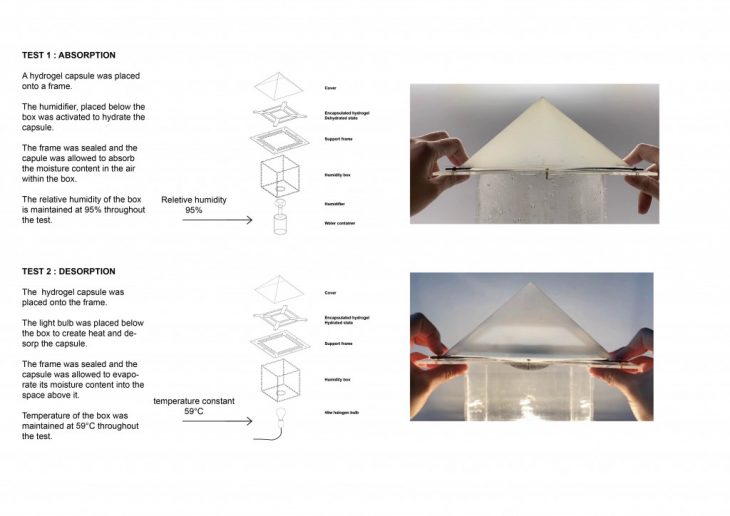
ENCAPSULATING HYDROGEL
Experiments on how geometry can affect kineticism.
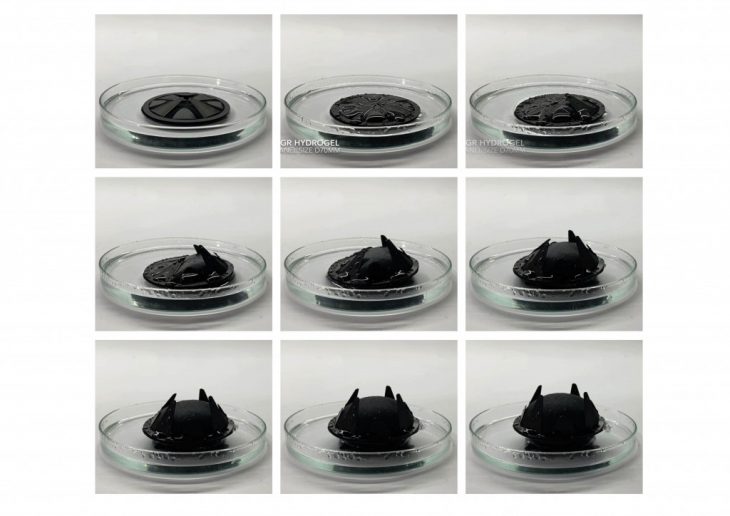
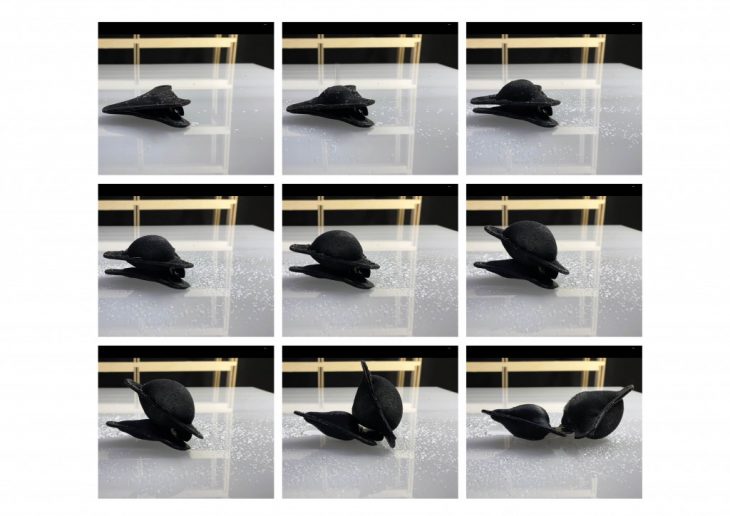
The size of each capsule is dependent on the quantity of hydrogel in the textile enclosure, as the weight increase of uptaken water affects the structural stability of the capsule. The number of capsules needed to provide for 1 person’s daily drinking water varies accordingly.
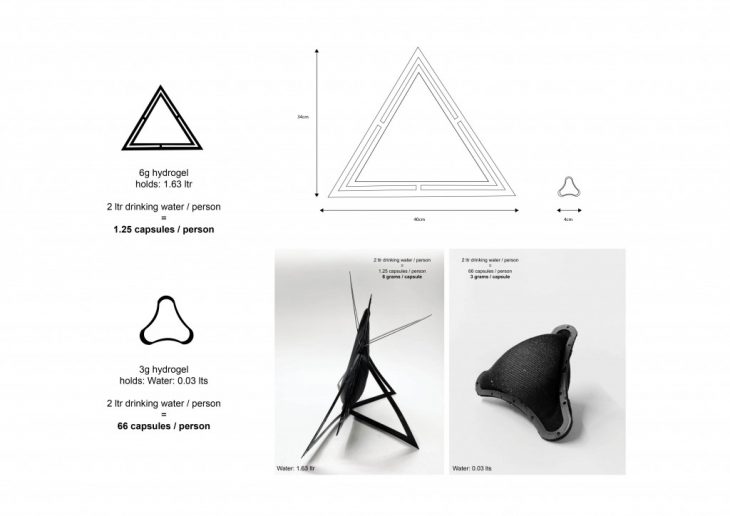
An average 4 person household on the african continent consumes 18L of water. In order to collect 18L of water with our hydrogel capsules, one absorption cycle (uptake to full capacity) over the span of 2 days is required. However, greater efficiency can be achieved by achieving multiple cycles at 20% uptake, as indicated by the state of the art hydrogel.
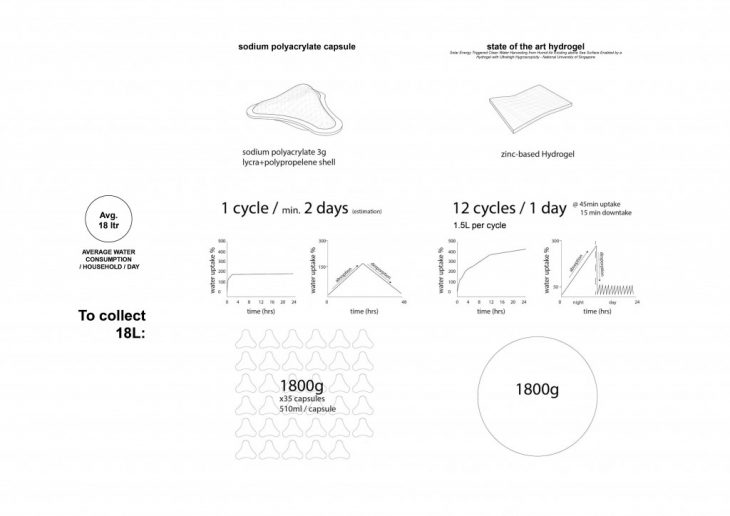
FORM FINDING – WATER COLLECTION
A slope analysis of the dome structure revealed that splitting and offsetting the dome create a higher percentage of hydrophilic surface.
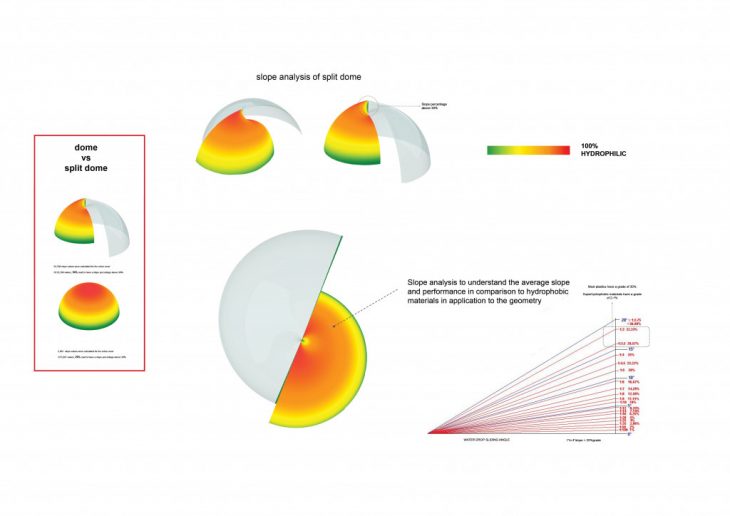
Comparing time taken for water to flow to base. The cone’s flow is faster than the current geometry’s, it is limited in surface area.

Research on the shell of beatles indicates that a water droplet can self-propel due to the inducement of surface energy released upon adjacent droplets coalescence, which experiences four stages, namely condensate,growth, coalescence, and jumping.
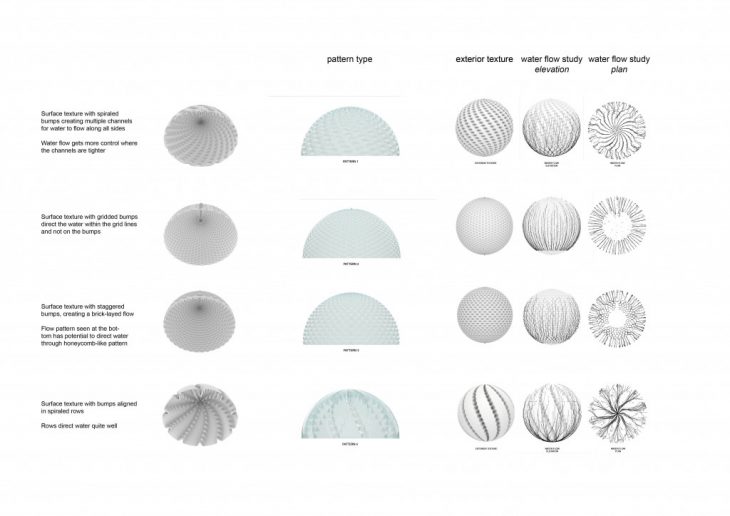
DESIGN EXPLORATION
To inform the design process, the steps for desalination and collection process was deconstructed into a typology of strategies. Concentrating on each step and maximizing the efficiency of each strategy, a pool of ideas for geometry was collected.
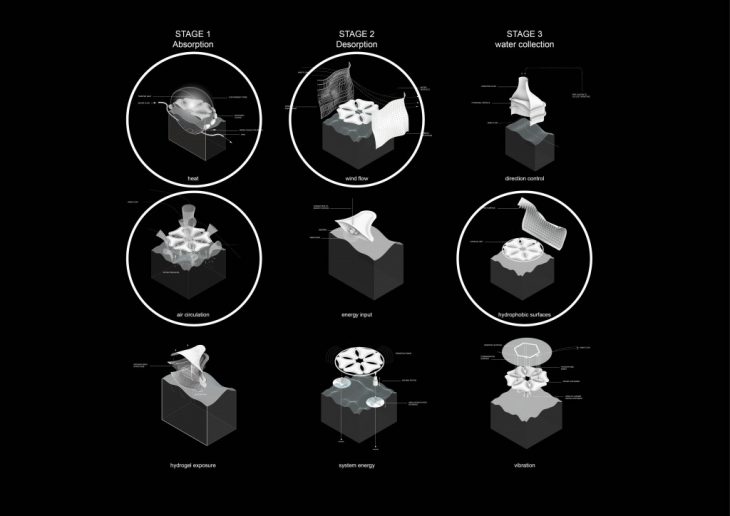
DESIGN PROPOSAL
ELEMENTS
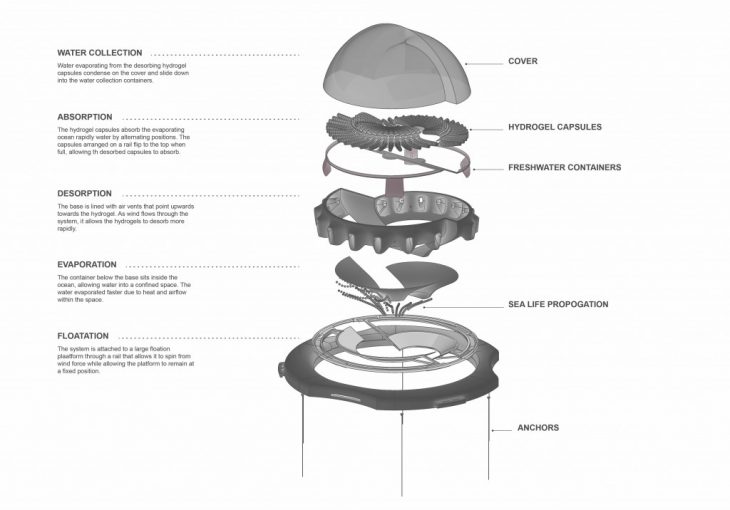
PLANS
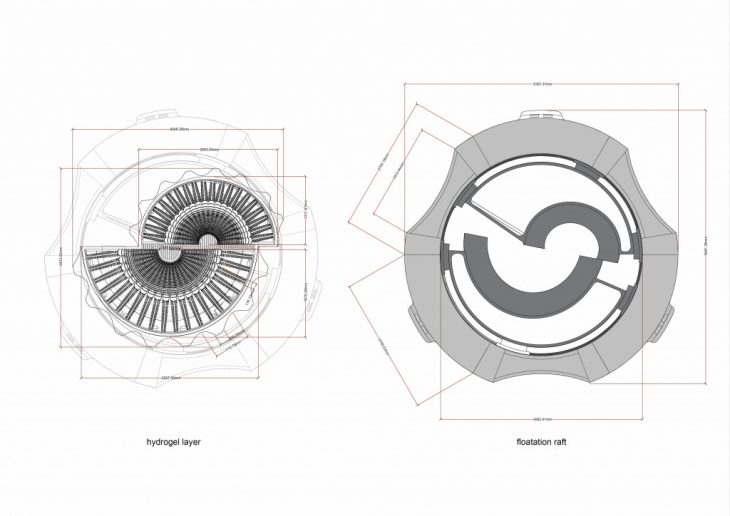
HYDROGEL SUPERSTRUCTURE
Maximizing possible quantity of hydrogel per module
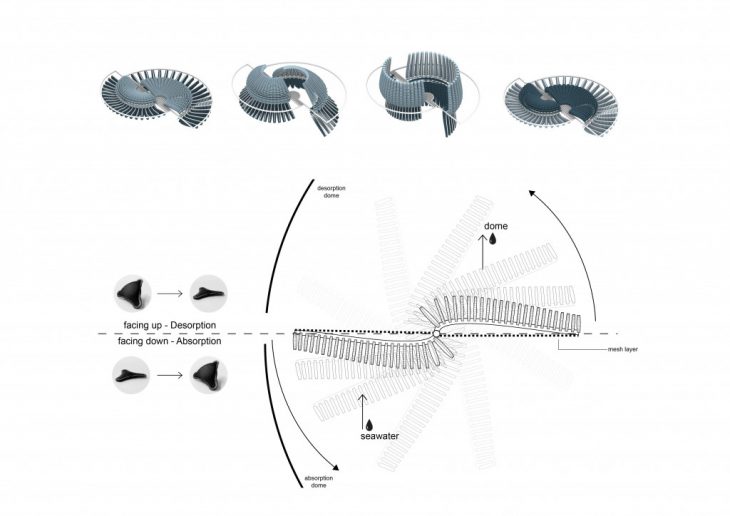
WATER CONSUMPTION STUDY
Understanding the current social structures of consumption of water per person and per house
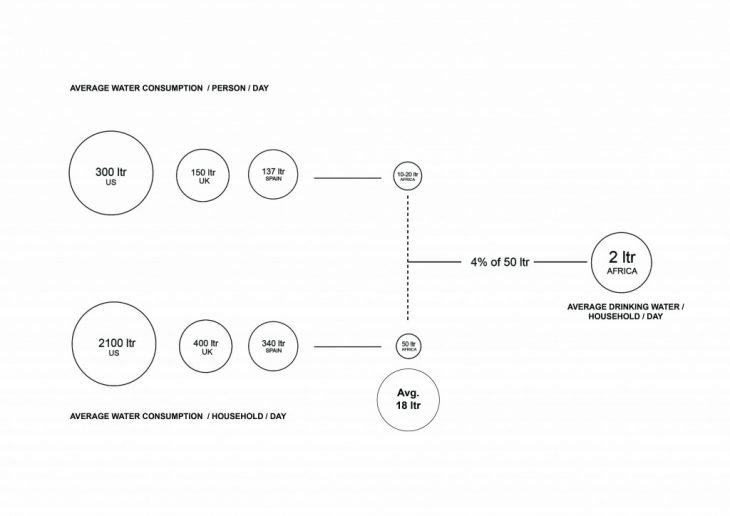
FLOATING COMMUNITIES
As previously identified, 1 module is able to serve the needs of 6.6 household’s daily water consumption. Thereby, the required number of modules per community is calculated. Other areas of investigation that would determine the aggregation pattern of hydrogel modules are: area of intervention, economic structure, social needs, patterns of movement, population, accessibility. A customized aggregation behavior would be defined to imagine the extension of these communities that fulfill social needs.
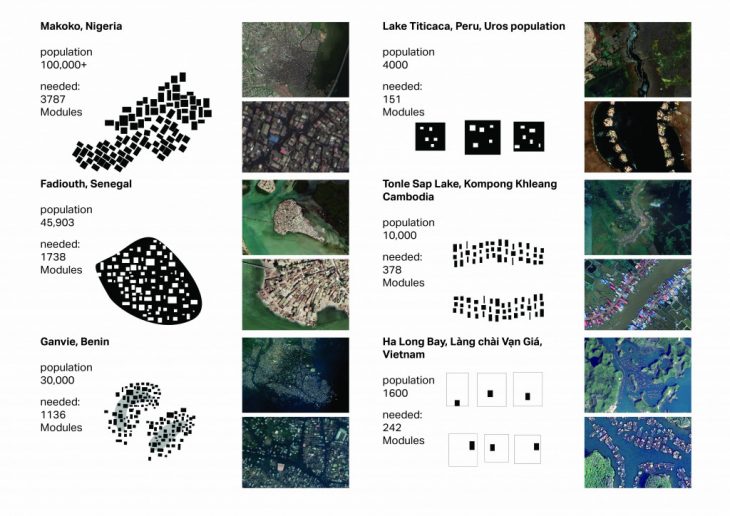
COMMUNITY INFRASTRUCTURE
A catalogue of potential social infrastructure was collected to imagine the possibility of water farm modules acting as social and economic nodes, catering to the needs of society.
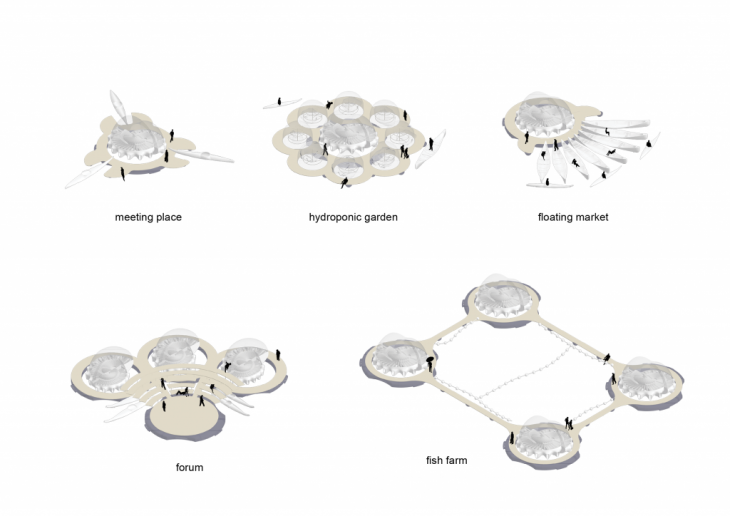
VISUALIZATION
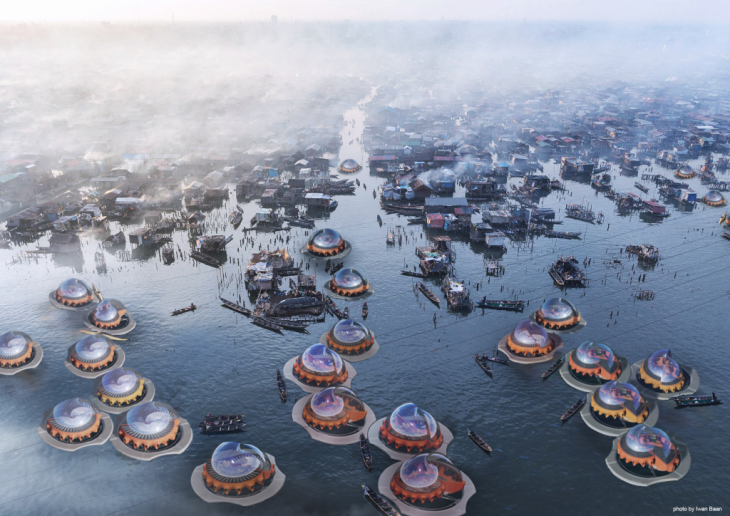
WATER FARM is a project of IAAC, Institute for Advanced Architecture of Catalonia developed in the Master in Advanced Architecture 2019/20 by
Students: Eve Nnaji, Robyn Houghton, Taras Kashko
Faculty: Areti Markopoulou, Raimund Krenmueller, David Andres Leon, Nikol Kirova